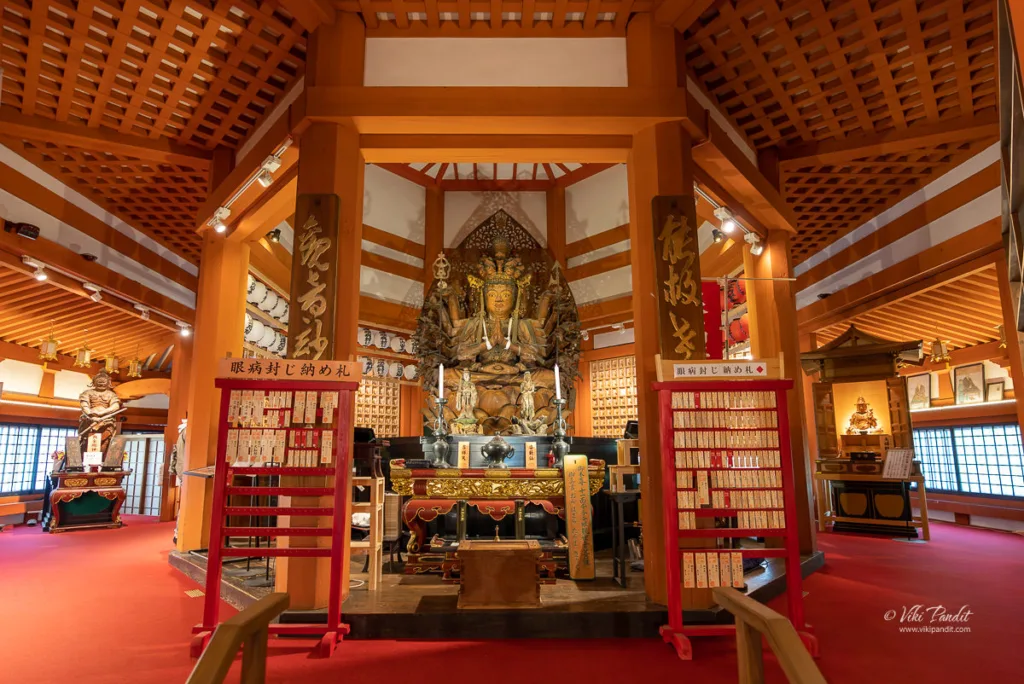Tsubosaka-dera Temple, situated in the serene landscapes of Nara, Japan, is a cultural gem with roots dating back over 1,300 years. Nestled on Mount Yoshino, this heritage site provides a panoramic view of the surrounding mountains and valleys, particularly breathtaking during the cherry blossom season.
Kansai
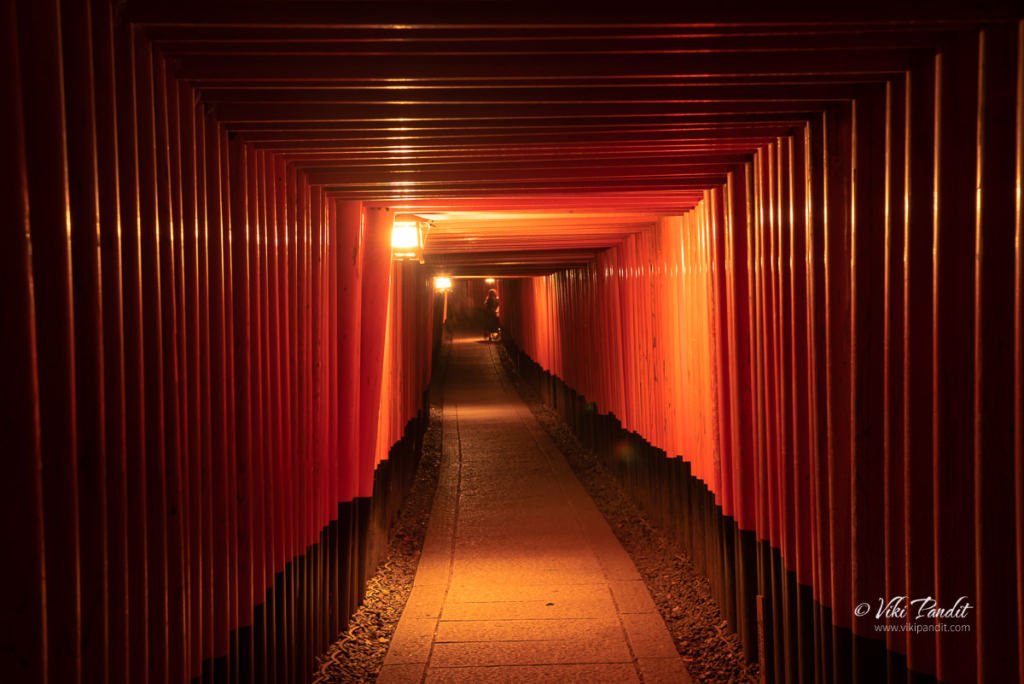
The enchanting Torii Gates of Fushimi Inari Taisha
Today we go for a night photo-walk to Fushimi Inari-taisha, the head shrine of the kami Inari, located just a train stop away from the bustling city of Kyoto.
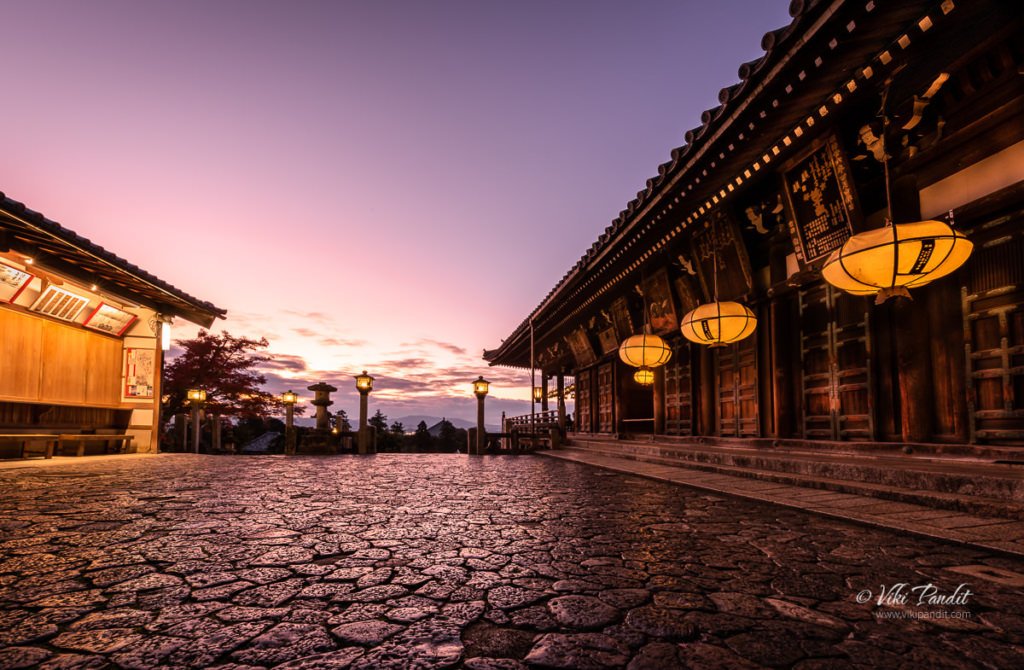
Sunset at Nigatsu-dō
Nigatsu-dō is one of the important structures of the Tōdai-ji temple in Nara. If you are here to know more about Nigatsu-dō, you already must be familiar with the Todai-ji temple, registered as a world heritage site, and one of the most revered Buddhist temples in all of Japan. I have visited Nara Park many […]

Fall at Nara Deer Park
One of the most amazing places to enjoy fall is at the Nara Deer Park in Nara in Kansai. The lavish park contains many momiji trees that begin to turn red and impart vivid red colors to the area. The roaming deer adds to the already beautiful canvas created by nature.

Photowalk to Ukimido Pavilion
While on my evening walk today, I dropped in at Ukimido Pavilion. Ukimido is a hexagonal gazebo over the Sagiike Pond in an aloof area of Nara Park. During summer evenings the floating pavilion is illuminated and it feels very relaxing sitting in the center of the pond surrounded by enchanting lights.
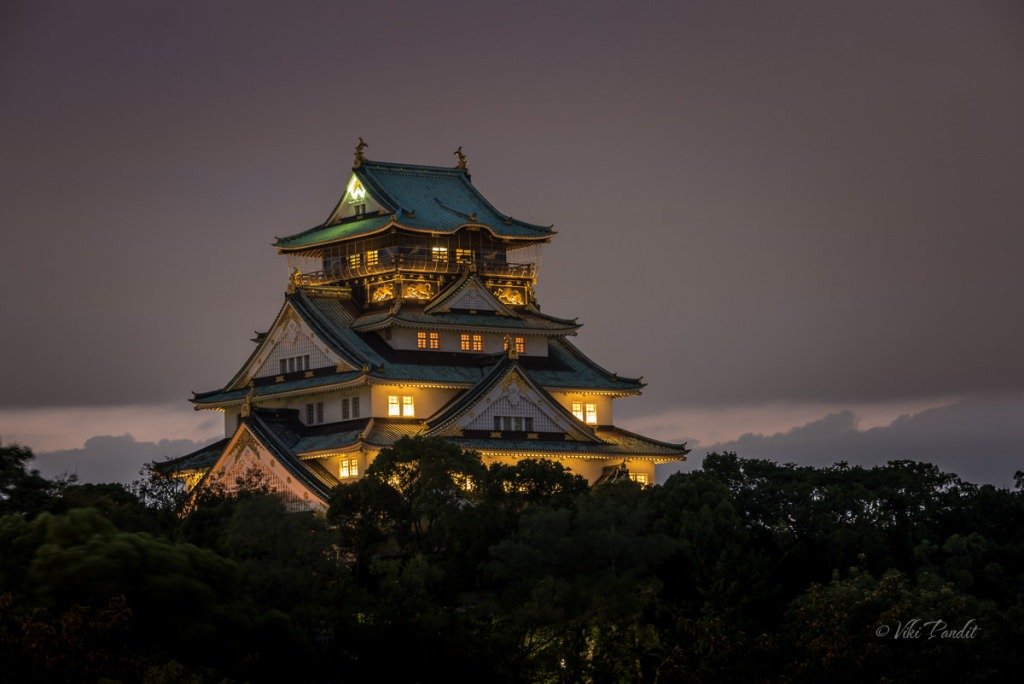
The stunning Osaka Castle
I love walking around Osaka Castle in the evenings. The castle was built by Toyotomi Hideyoshi, who ruled Japan in the latter half of the 16th century. The stone walls and moats surround the castle separating it from the bustling city. As dusk sets in, the sodium lamps light up the pathways surrounding the castle. The weeping sakura leaves along the wide moat briskly sway in the wind and the castle itself looks like a fantasy structure from the mythical age of dragons.
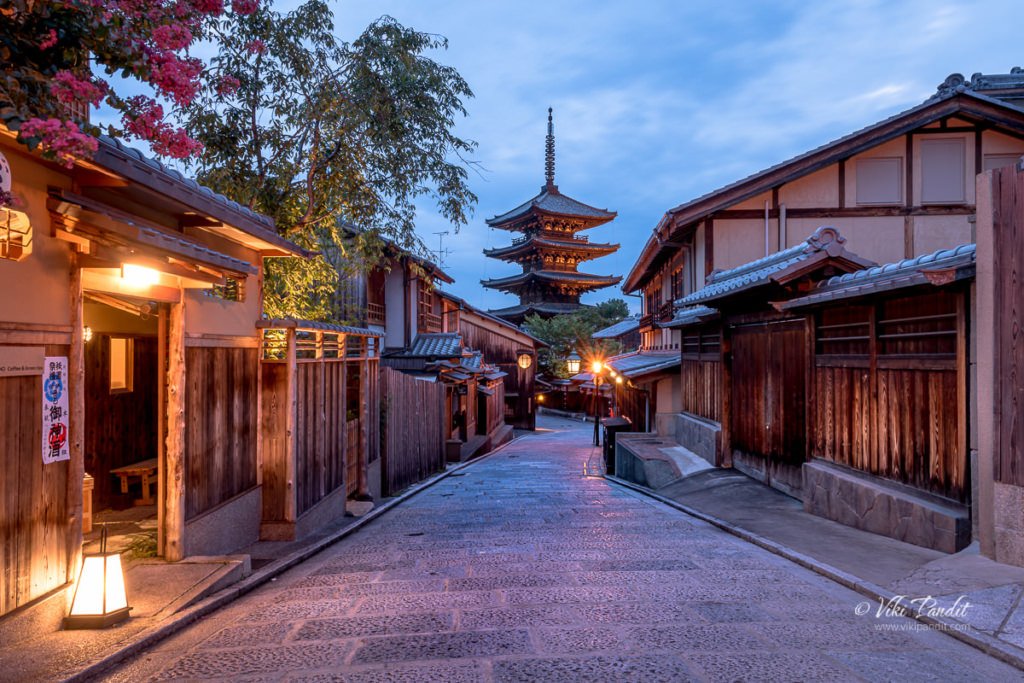
An evening at Yasaka-no-tō Pagoda
Today we take a walk down to Yasaka-dori in Kyoto to the stunning Yasaka-no-tō Pagoda. Built in 592, the Pagoda is the only standing structure of the Hokan-ji Temple. The rest of the structures have either been destroyed by fires or earthquakes over the years.

Exploring the Horyu-ji Temple
Hōryū-ji is one of the seven great temples of Nara. Today we investigate the Pagoda at the grounds, said to be one of the oldest standing wooden structures in history. The tree used in the construction of the Pagoda dates back to 594 CE. Can wood even survive that long!

Hike to Uguisuno-taki Falls
Today I went on a hike to Uguisunotaki Falls, into the deep end of the Kasugayama Forest, surrounded by tall Pines, where even the Sun doesn’t dare to peep through.
